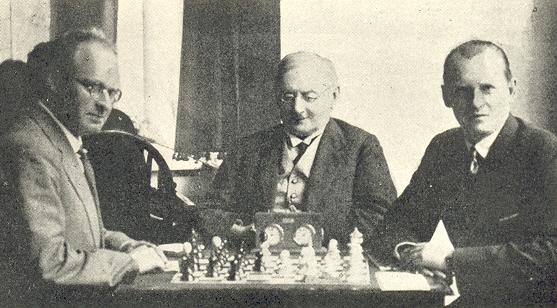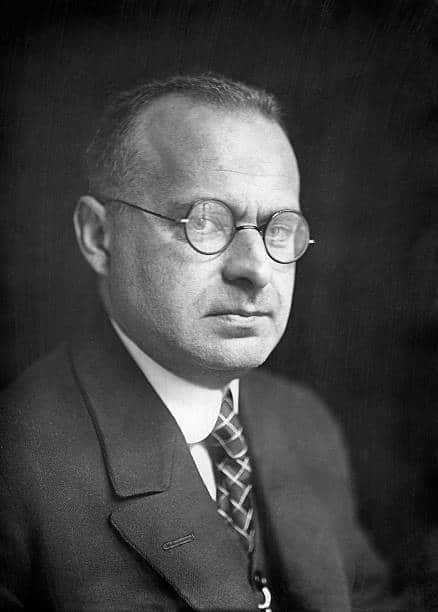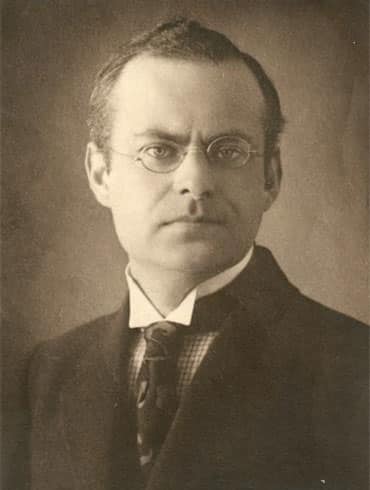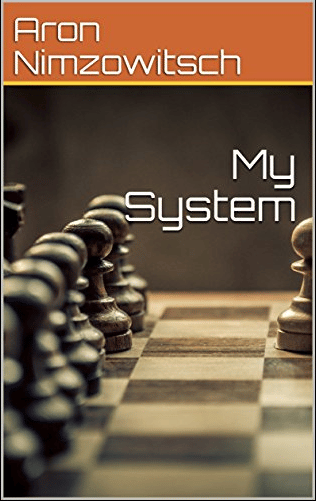Probably the best known and most popular book in the chess world is My System by Aaron Niwmzowitsch and this is because it is a book that every chess player must read at some point in his career if he wants to continue advancing in the world of chess.
The book of a legend who never became world champion, however, is an uncrowned king and who is credited with many important contributions both in openings and defenses and in modern chess.
Table of Contents
Who was the creator of My Aaron Niwmzowitsch System?
Aaron Nimzowitch was a Danish chess player, but of Latvian origin, he is known for being the father of the hypermodern school.
Among his most outstanding achievements we can find the second place shared with Spielmann in San Sebastian in 1912. Also his victory in Marienbad in 1925 (tied with Akiba Rubinstein) and first place in Dresden in 1926 beating Alekhine, also his first place in London (shared with Tartakower) and in Berlin in 1928.
But his greatest triumph was in Karlsbad in 1929, where the strongest grandmasters of the time were present, with the exception of Alekhine.

Curiosity: Aaron Nimzowitsch learned to play chess at the age of eight, but did not participate in tournaments until late in 1904.
What is Aaron Niwmzowitsch's My System about?
My System is a book whose purpose was to expand the horizons of chess in all strategic and positional senses. This is based on the concepts that should be applied in a game such as prophylaxis, centralization and blocking.
It is important to mention that this is a book that entered the world of chess between 1925 and 1927, so these topics that we know today, have importance thanks to this book, which is considered a manual on strategic issues.
The book is a turning point for any player who has a slow, solid and positional style of play, since it enriches in a unique way this kind of players and reinforces their theoretical bases for the understanding of current and modern chess.
Features of the book (My Sistem)
My System by Aaron Nimzowitsch is a book that can be complicated for beginners or for those who are new to chess, and here we mention the characteristics of this masterpiece ahead of its time.
- Difficulty: Medium/difficult.
- Notation: Algebraic.
- Focus: Strategy.
IMPORTANT: As the difficulty level of the book is intermediate or advanced, it is advisable to read other books and get more experience in the game, because the concepts used in the book, at certain point can be confusing.
In my personal experience I was able to begin to understand the book after I had reached the level of strong club player, which would be the equivalent of about 1800 or 2000 ELO points.
Strengths of My System by Aaron Nimzowitsch
A review of this book would not be complete without at least showing the main benefits of My System to readers, as well as highlighting the focus of this author's work in the masterpiece he created many decades ago.

- The strategic and positional concepts are very good.
- It will teach you to play solid chess based on concepts or theory.
- The games selected by the author are very good for the study/training of positional chess.
Disadvantages of My System by Aaron Nimzowitsch
As well as its high points, it is necessary to talk a little about the counterpart and disadvantages of this book, which, despite being a classic and impressive work, also has some drawbacks that are negative points for those who wish to read this book.
- It is an old book.
- It has algebraic notation (first edition) which complicates the reproduction of games and positions.
- It is a complicated book for beginners.
IMPORTANT: Despite its disadvantages, it is still a fairly complete book at least in the strategic training of a chess player, and meets the expectations in reference to what is expected of a genius like Aaron Nimzowitsch.
Strategically or tactically is it a book that will help you grow?
As I mentioned before, it is a specific book to develop strategic plans based on positional concepts that every chess player should know. Without these concepts you cannot advance in chess and even though they are not “hypermodern” they have always been present.
Modern or hypermodern chess (what it is today) could not exist without this book, and many positional players would not have exploited their skills without this information.
Yes, it can be argued that other players were already unconsciously performing prophylaxis, blocking and centralization moves, but did they really explain these concepts to other chess enthusiasts? The answer is no, many geniuses of the time also wrote books, but they failed to prevail over My System.
This is a book that will help you grow strategically like no other, and you will even be able to develop tactics automatically, because after you have gained short and long term advantages, tactics are unstoppable.

Other books by Aaron Nimzowitsch
Nimzowitsch did not focus only on My System, actually, this was part of a series of books he wrote for a long time, and here you will find more interesting books by this chess genius:
1. Carlsbad 1929 One of the greatest tournaments in history.
Publisher: Chessy
2. The Blockade.
Publisher: Zeticula
3.The practice of my system.
Publisher: Grabo
What to expect from My System? In recapitulation, My System is a must-read book, I know I have said it a couple of times through this review, but unlike other books, I have read and others I have reviewed, this one is essential for the development of a chess player who hopes to reach at least 2000 ELO points.
A book that in complement with Aaron Nimzowitsch's other book “The practice of my system“ which nourishes anyone with privileged information to later transform it into a deadly weapon in standard chess.
It will also help you find patterns in positions that must be played positionally, and this is an advantage that will help you in any chess rhythm.
If you enjoyed this book on strategy and positional play in the middlegame, you should consider learning more about the opening with the review of Understanding Chess Openings by Sam Collins.






